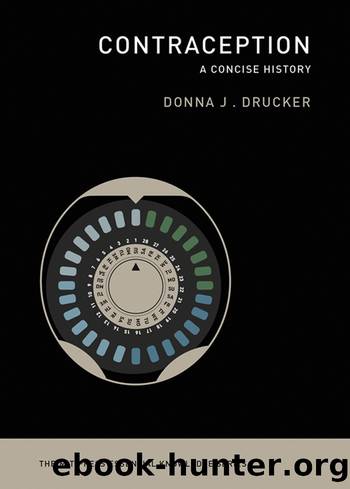Contraception: A Concise History by Donna J. Drucker

Author:Donna J. Drucker [Drucker, Donna J.]
Language: eng
Format: epub
ISBN: 9780262357586
Google: IM_XDwAAQBAJ
Publisher: MIT Press
Published: 2020-02-04T00:00:00+00:00
In 1970, 200,000 sterilization operations were performed in the US, and in 1980, more than 700,000 were performed, a disproportionate number of them on women of color.
Additionally, a group of women including Helen Rodríguez-Trías founded the Committee to End Sterilization Abuse (CESA) in 1974, which in turn created a coalition of women’s health activist groups that developed regulations to protect women patients at public hospitals in New York City.21 The related Committee for Abortion Rights and against Sterilization Abuse (CARASA) was established in 1977 and published Women under Attack: Abortion, Sterilization Abuse, and Reproductive Freedom on their findings in 1979. Both committees were instrumental in establishing US federal guidelines to limit forced sterilization through the Department of Health, Education, and Welfare in 1979, even though the practice continued in some areas of the United States, including California and Tennessee, through the 2010s.22 As Ross points out, “Women of color, who continuously face strategies of population control through eugenics-based ideologies, must fight equally as hard for the right to have children.”23
Along with human, civil, and women’s right activism, intersectional theories are also critical to understanding reproductive justice. Ross and Solinger state that “reproductive justice is the application of the concept of intersectionality to reproductive politics in order to achieve human rights.”24 The theoretical roots of reproductive justice include black feminist theory, self-help theory, critical race and critical feminist theory, human rights theory, standpoint theory, and womanist ethics and religion theory.25 Standpoint theory—the idea that knowledge is situated along different axes of power and marginalization—is particularly important, Ross writes, because “as black women, we occupy both an insider and outside position within the feminist movement, the African American community, and in gender-nonconforming spaces.”26 It is no accident that reproductive justice emerged not from academic circles but from activists of color, many of whom suffered from injuries to their reproductive health and human dignity. It is undeniable that “women of color are ideologically leading the movement.”27
In sum, the experiences of reproductive justice advocates as members of marginalized groups shaped their abilities to identify with systematic injustice and to analyze the mechanisms necessary to manifest political and social change. As the authors of Radical Reproductive Justice note, “intersecting forces produce differing reproductive experiences that shape each individual’s life. While every human being has the same human rights, our intersectional identities require different considerations to achieve reproductive justice.”28 A foundation in human, civil, and women’s rights and also sensitivity to the specific needs of individuals and groups provide reproductive justice activists the intellectual and practical grounding that they need to facilitate the changes that would make the reproductive lives of all healthier and safer.
Download
This site does not store any files on its server. We only index and link to content provided by other sites. Please contact the content providers to delete copyright contents if any and email us, we'll remove relevant links or contents immediately.
| Anatomy | Animals |
| Bacteriology | Biochemistry |
| Bioelectricity | Bioinformatics |
| Biology | Biophysics |
| Biotechnology | Botany |
| Ecology | Genetics |
| Paleontology | Plants |
| Taxonomic Classification | Zoology |
Sapiens: A Brief History of Humankind by Yuval Noah Harari(13053)
The Tidewater Tales by John Barth(12030)
Do No Harm Stories of Life, Death and Brain Surgery by Henry Marsh(6336)
Mastermind: How to Think Like Sherlock Holmes by Maria Konnikova(6236)
The Thirst by Nesbo Jo(5785)
Why We Sleep: Unlocking the Power of Sleep and Dreams by Matthew Walker(5642)
Sapiens by Yuval Noah Harari(4537)
Life 3.0: Being Human in the Age of Artificial Intelligence by Tegmark Max(4507)
The Longevity Diet by Valter Longo(4445)
The Rules Do Not Apply by Ariel Levy(3906)
The Immortal Life of Henrietta Lacks by Rebecca Skloot(3826)
The Body: A Guide for Occupants by Bill Bryson(3801)
Why We Sleep by Matthew Walker(3772)
Animal Frequency by Melissa Alvarez(3755)
Yoga Anatomy by Kaminoff Leslie(3701)
Barron's AP Biology by Goldberg M.S. Deborah T(3632)
The Hacking of the American Mind by Robert H. Lustig(3580)
All Creatures Great and Small by James Herriot(3516)
Yoga Anatomy by Leslie Kaminoff & Amy Matthews(3396)
